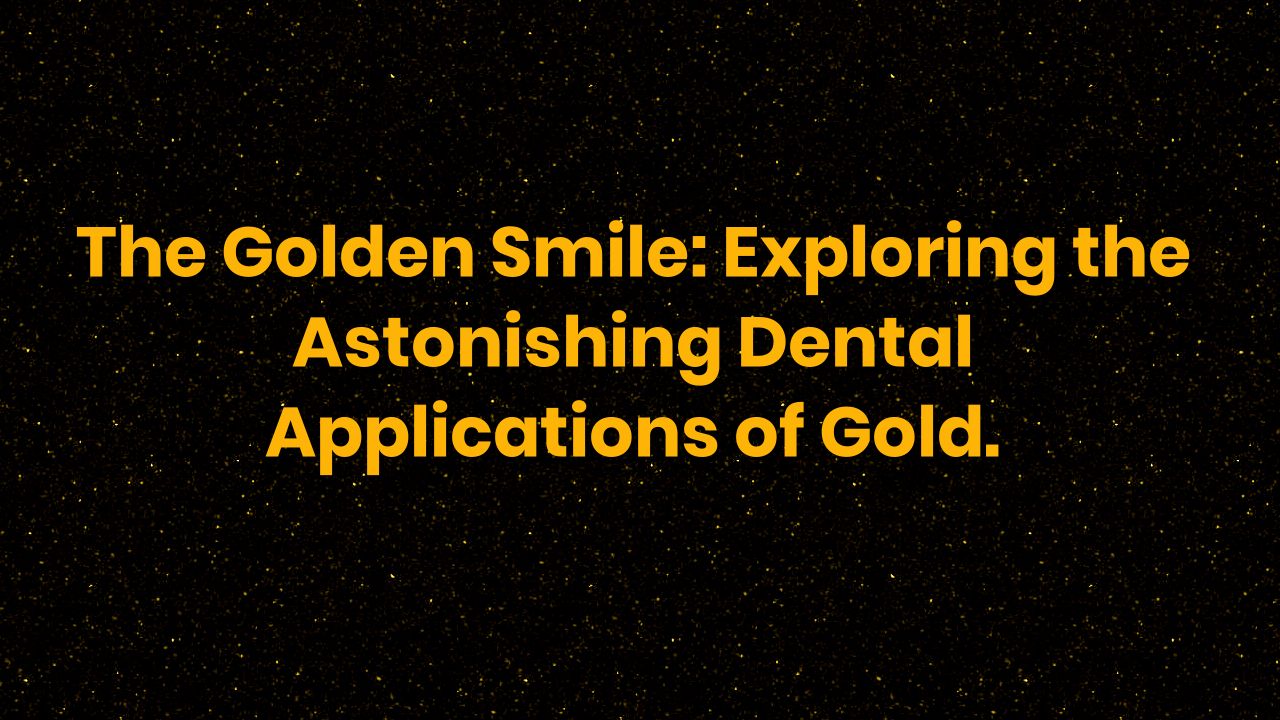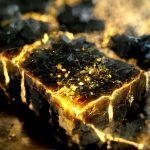
Table of Contents
Introduction
Gold has been treasured throughout history for its beauty and value, but its uses in dentistry may surprise you. From cavity fillings to orthodontic braces, gold has been a popular choice in dentistry for centuries due to its unique properties. In this blog, we will explore the various dental applications of gold, including its history in dentistry, versatility in fillings, durability in crowns and bridges, biocompatibility in implants, and traditional use in tooth restoration.
History of Gold in Dentistry
Gold has been used in dentistry for over 3,000 years, with ancient Egyptians using gold wire to stabilize teeth. In the 19th century, gold foil was a popular material for fillings due to its durability and compatibility with the human body. Today, gold is still used for its unique properties, including its biocompatibility and longevity.
Cavity Fillings: The Versatility of Gold Restorations
Gold fillings offer several benefits, including their durability and compatibility with the human body. Gold fillings can last up to 20 years, making them a cost-effective option in the long run. Additionally, gold is non-toxic and hypoallergenic, making it an ideal choice for those with sensitivities to other materials. Gold fillings also require less removal of the tooth structure compared to composite fillings, making them a conservative option.
Crowns and Bridges: The Durability and Aesthetics of Gold
Gold crowns and bridges are known for their durability, longevity, and biocompatibility. Gold is a strong material that can withstand the wear and tear of everyday use, making it an ideal choice for dental restorations. Additionally, gold has a proven track record of success in dental restorations, making it a reliable choice compared to other materials. Gold crowns and bridges also offer a natural appearance when used on the back teeth, blending seamlessly with the natural tooth color.
Implants: The Biocompatibility and Success of Gold
Gold has been used in dental implants due to its biocompatibility and success rate. Gold implants have a lower rejection rate compared to other materials as gold is non-toxic and non-allergenic, making it the ideal choice for those with sensitivities or allergies. Additionally, gold implants offer several advantages such as better osseointegration, higher biocompatibility, and a higher success rate compared to other implant materials.
Gold Orthodontic Braces: A Luxurious Solution to Teeth Alignment
Gold orthodontic braces are becoming increasingly popular as a luxurious alternative to traditional braces. Gold braces are made from high-quality gold material, offering a luxurious look while still being effective in teeth alignment. Not only are gold braces durable and long-lasting, but they can also be customized to fit the individual’s needs, allowing for a truly personalized treatment.
Gold Foil: The Traditional and Functional Material for Tooth Restoration
Gold foil has been used in dentistry for over a century due to its unique properties. Gold foil is a thin sheet of gold that is manipulated to fit the shape of the tooth’s surface. It is a proven and functional material for tooth restoration due to its durability and biocompatibility. Gold foil is also easy to manipulate, making it ideal for use in small cavities or for repairing minor tooth damage.
The Timelessness of Gold in Modern Dentistry
Gold has been used in dentistry for centuries, and its unique properties make it an ideal material for many dental applications. From cavity fillings to orthodontic braces, gold is durable, biocompatible, and long-lasting. While other materials have come and gone, gold remains a reliable and time-tested choice in modern dentistry.
Summary and Conclusion
In conclusion, gold has a long and illustrious history in dentistry, with its unique properties making it an ideal material for various dental applications. Gold is versatile, durable, biocompatible, and long-lasting, making it a reliable and effective choice for dental restorations. From cavity fillings to orthodontic braces, gold remains a time-tested and luxurious option in modern dentistry.





